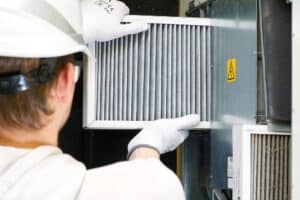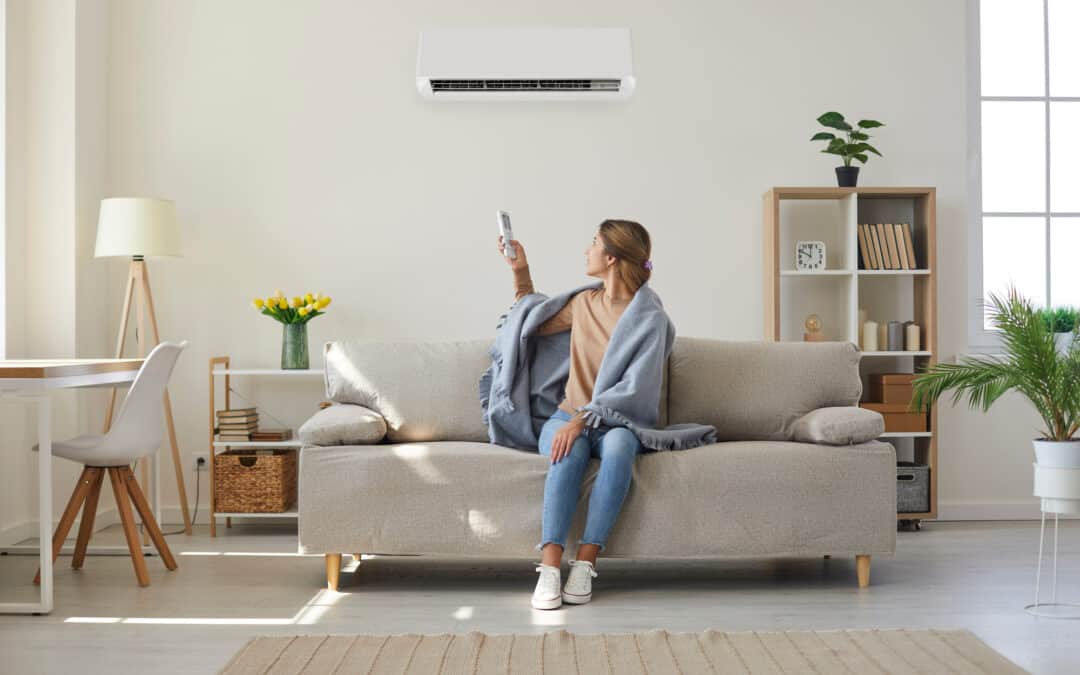Most homes rely on their HVAC systems to get through the winter. So, the last thing you want to happen in this harsh season is for your unit to fail. It can be incredibly inconvenient, especially for those who live in severely cold regions.
If your unit is exhibiting signs of failure, it must be fixed as soon as possible. There are some small issues that homeowners can resolve on their own. Some, however, demand the services of a professional HVAC specialist. Also, regular checkups should be done before winter approaches. This way, there’s a strong chance it won’t break down.
Here’s a list of the most typical heating problems in the winter and how to solve them:
1. The Furnace Won’t Switch On
Discovering that your heating system isn’t working after turning on your thermostat can be upsetting. The first thing that comes to mind is that the heat pump system has malfunctioned. While this could be true, there could be other reasons, including:
- Heat pump not receiving power – It could be because a breaker or power switch has tripped. So, examine the power supply to confirm that no switches have tripped and everything is in perfect working order. Additionally, check for power outages. If there aren’t any, contact your service provider right away.
- Thermostat not receiving power – Your system won’t function if the thermostat doesn’t receive power. Examine the latter for any error messages and whether it’s turned on. If the thermostat is working, examine the breaker that regulates the area.
If your heat pump seems to be malfunctioning, try to locate where the problem is. But if you can’t identify and rectify the issue, it’s best to call your technician.
2. The Furnace Won’t Ignite
The furnace should immediately ignite when you turn on the unit. The thermostat communicates with the ignition system so that the burners are activated. However, it won’t generate enough heat if the system has a fault, which could be any of the following:
- Malfunctioning ignitor – It’s typical for igniters to malfunction when they’ve suffered some wear and tear. Unfortunately, testing and replacing them aren’t tasks you can DIY. They require a professional technician with the proper heating and air conditioning testing tools and replacement parts.
- Incorrect ignitor – If the wrong igniter is installed during service inspection, it could result in inappropriate voltage, which may cause a system failure. Check whether there were any igniters changed in your service records. If there is, call your service provider. But even if the service logs reveal nothing, call your technician.
- Malfunctioning limit switch – The limit switch cuts off the ignitor when temperatures get too high. However, if this part malfunctions, it could disrupt the entire ignition system. A dirty air filter could cause blockages, leading to poor airflow and overheating. So, first, change your air filter to see if it can fix the issue. If that doesn’t work, call your technician so they can inspect the limit switch.
While you could troubleshoot some of the issues related to the ignition yourself, it’s always best to leave such problems to a professional.
3. Thermostat Won’t Turn On
The thermostat is the one responsible for regulating your HVAC. So, if it malfunctions, the whole system isn’t going to work properly. Here are some reasons why it may be malfunctioning and how to address them:
- Old unit – If you’ve had your unit for over ten years, your thermostat may need replacement. You could install one yourself, but it’s best to let an expert do it.
- Dead battery – Thermostats that are hardwired to home-use battery power. So, if your thermostat is unresponsive or the screen seems blank, it could be that the batteries are flat. The batteries would then need to be replaced.
- Tripped float switch – A float switch is a component found in condensing furnaces that cuts power to the thermostat if high condensation levels are detected. Hence, if moisture accumulates in the condensate drain, clear it up and reset the switch.
Thermostats can malfunction over time. So, if you’ve had your unit for a while, it’s wise to replace it. You could DIY the task but strictly follow the instructions.

4. Poor Airflow
There needs to be sufficient airflow for your house to be properly heated. Obviously, the opposite is what will happen when there’s poor airflow. Here are some of the possible culprits:
- Closed register – If you don’t have enough air flowing into your house, check if the vent register louvers are open. If they’re broken, replace them. If they’re dirty, clean them.
- Clogged ductwork – HVAC units rely on duct systems to move heated and cooled air throughout the home. If something is clogging the ductwork, it’ll obstruct the airflow. So, if you can access the ducts, consider checking for blockages. Ensure that all connections are secure. You could seal poor connections with aluminum foil tape. If you can’t, have a professional inspect and clean the ductwork.
- Dirty filters – Air filters are responsible for cleaning up the air that’s eventually channeled throughout your home. So, it’s safe to say that they also pick up dust and debris. It’d be best if you replaced them every three months. But you should check whether they’re in good condition, ideally every month. Clogged filters disrupt the airflow. Therefore, if you notice that your filters are dirty, replace them.
- Faulty blower motor – The blower motor is the one that pushes air throughout your ducts. If there’s a buildup, air won’t move properly. A faulty capacitor, broken fan belt, worn bearings, and fan belt pulley could all cause the blower to malfunction. These parts would need replacement. Sometimes, the technician may have to replace the whole blower motor.
Check your ducts if you suspect your system isn’t working properly because of poor airflow. Any homeowner could do this on their own if the ductwork is accessible. But, again, if you need help, don’t hesitate to call the professionals.
5. Burning Smell
It’s normal for your furnace to have a burning smell if you haven’t used it for a long time. This happens because it’ll be burning or getting in contact with the dust in the system. But if the smell persists several hours after switching it on, you must investigate further for these problems:
- Wiring issues – If there’s an issue with the wiring in your furnace, the insulation could get burnt. It then generates a smell similar to burning plastic. It’s important to act fast upon detecting the odor because electrical wiring faults can be dangerous. Turn the system off immediately and have a technician look it up.
- Motor overheating – An overheated furnace motor could produce a burning odor, which may result from worn motor bearings. These may be the cause of a grinding noise along with a burning odor. Shut the system down immediately and have the bearings repaired to prevent further damage.
If you notice any burnt smells or smoke, it’s important to immediately switch off your system until the technician arrives on site.
Conclusion
It’s always important to have your unit checked by a professional HVAC technician before winter approaches. They’ll repair or replace all the parts in your system to ensure it’s ready. HVAC breakdowns during winter can be inconvenient. If you experience some of them, you can use the guide above to identify and troubleshoot the issues. But remember that if you need help with anything, feel free to call an expert.

Recent Comments